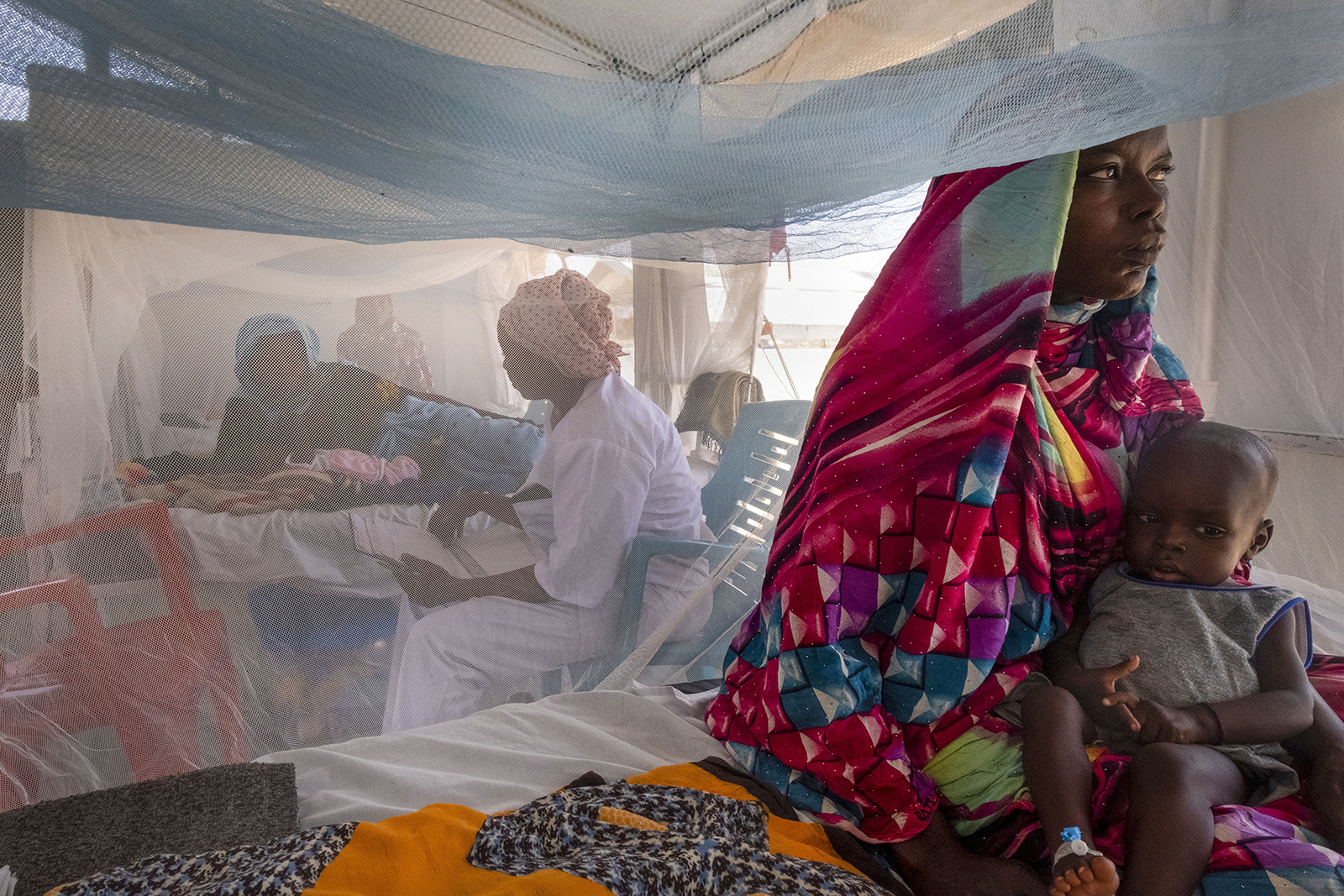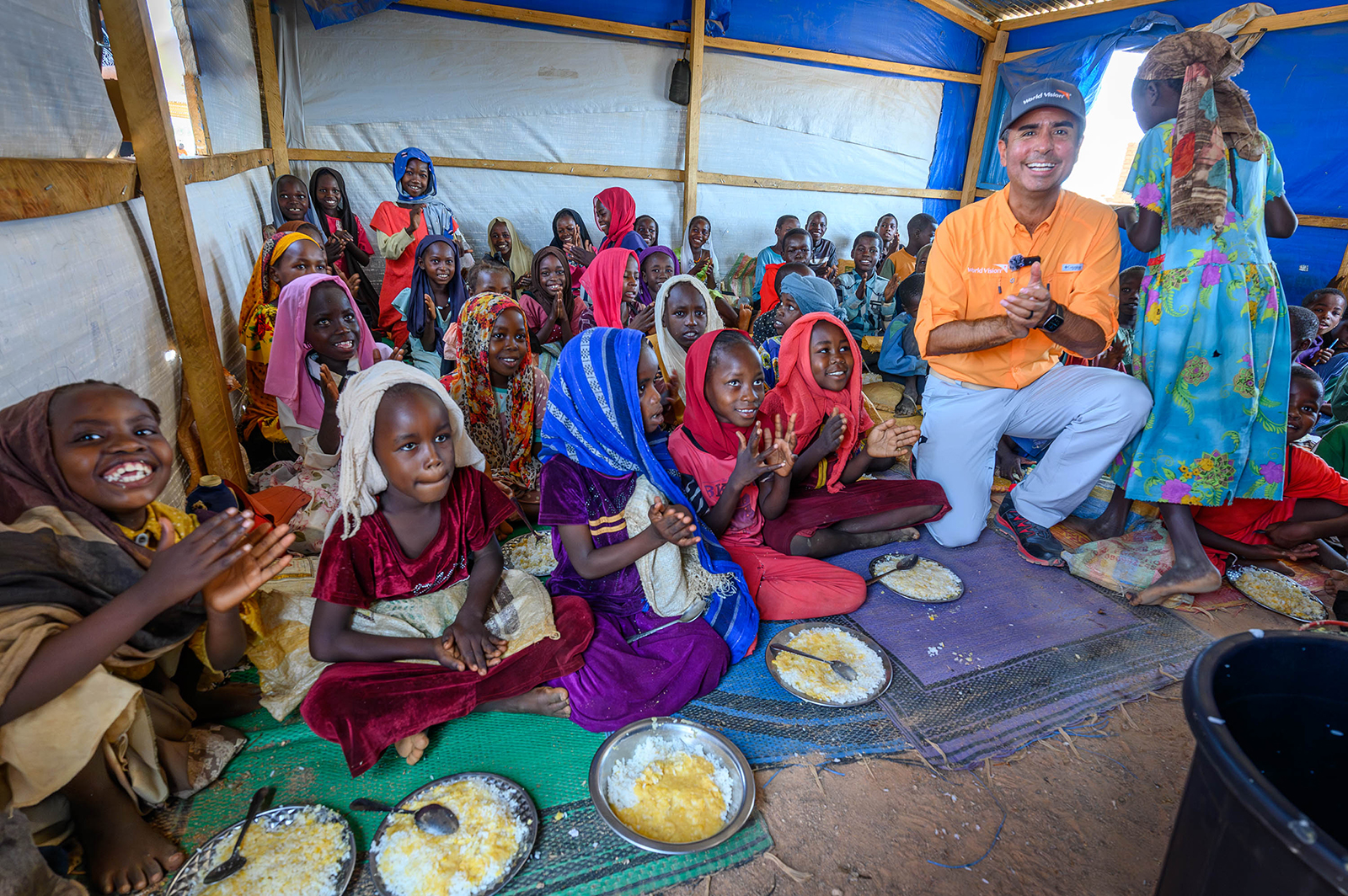
[ad_1]
(RNS) — Shortly after our flight had landed in Adré, Chad, on the border with Sudan, we were driving along sand and clay roads toward the spontaneous settlements where hundreds of thousands of Sudanese refugees are living. Within seconds we began seeing dead animal carcasses along the road, the result of the oppressive heat — around 110 degrees — and the lack of water and food. I watched as several women chose a plot of sand, dug four sticks into the ground and hung scarves across them — their only shelter.
I kept thinking, “This place is full of all the things you would want to run away from, and yet people are running toward it.”
The reason so many are desperate to get to this spot is no mystery: A year ago, a civil conflict in Sudan erupted into large-scale violence. But the refugees, nearly all of them women and children, spoke to us about their desperation to get to this place where no one should have to live, in stories no mother or child should have to tell.
They told of the terror of beatings, gunfire and explosions; of escaping violence in the night, often with the agony of leaving loved ones behind, not knowing if they would live or die.
Millions of families are trapped here in limbo in what has become the largest displacement crisis in the world, which in turn is fueling what threatens to become the world’s largest hunger crisis. A significant percentage of the population is already experiencing severe food shortages, and the rates of child malnutrition keep climbing. The result is nearly 25 million people — equivalent to the population of Florida — needing urgent aid.

File – Sudanese children suffering from malnutrition are treated at an MSF clinic in Metche Camp, Chad, near the Sudanese border, Saturday, April 6, 2024. (AP Photo/Patricia Simon, File)
The details of this crisis are horrifying. The scale is immense. And yet most Americans know little to nothing about it. This humanitarian disaster continues to grow almost entirely outside the media spotlight. As new emergencies understandably draw our attention, the children of Sudan are forgotten.
World Vision’s founder, Bob Pierce, was known for his prayer, “Let my heart be broken with the things that break the heart of God.”
This has always been a dangerous prayer. Every day, the headlines are filled with humanitarian suffering resulting from war, disasters and extreme poverty. Some crises, like the one in Sudan, often don’t even make the headlines. But the lack of awareness about Sudan’s escalating crisis has become one of its gravest threats.
No one wants to ignore the suffering of children. Whenever I talk with friends, telling them about the kids who are barely surviving in the world’s toughest places, they are moved and eager to pray and help. I believe God has wired us to care for these precious little ones. And when we act, lives are changed, even saved.
It’s time that we get the word out about the situation in Sudan. Seeing some children already with ribs sticking out, hair turning orange or yellow — telltale signs of malnutrition — I know the clock is ticking. The rainy season, also known as the lean season, is starting now. A time when food becomes even less accessible in both Chad and Sudan. A time when heavy rains will wash into temporary camps, worsening the poor sanitation and threatening to destroy shelters made only of sticks and tattered cloth.
This place to which hundreds of thousands have been forced to run will only become more difficult, even deadly, for already vulnerable people. I am sure God’s heart is broken for these forgotten children. I know mine is.

World Vision US President and CEO Edgar Sandoval Sr., right, visits a school feeding program for Sudanese refugee school children in Farchana Refugee Camp, Chad, May 29, 2024. (Photo © Wold Vision/Jon Warren)
We must also let people know that, even in some of the most difficult living conditions I’ve ever witnessed, there is hope.
On my last day in Chad, I met 13-year-old Isra, one of the tens of thousands of refugee children World Vision is supporting through school feeding programs. Children can come to school and receive not only an education, but a giant plate of beans and rice — a complete amount of nutrition for the day.
In the midst of so much suffering, the sound of children laughing, singing and learning was like an oasis. Isra told me about her dream to become a pilot. Every day she watches the United Nations planes coming in and dreams of flying to the places she’s seen only in videos — peaceful places with beautiful houses, buildings and trees.
I pray that Isra will get to realize her dream someday. But for that to happen, the world must turn its attention to the children of Sudan and take action to bring help and lasting peace.
(Edgar Sandoval Sr. is president and CEO of World Vision, a Christian humanitarian organization dedicated to working with children, families and their communities worldwide. The views expressed in this commentary do not necessarily reflect those of Religion News Service.)
[ad_2]